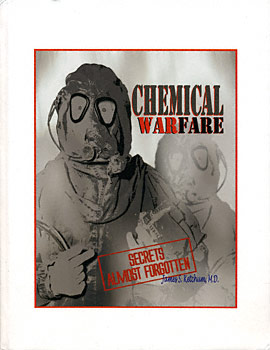
REVIEWS, EXCERPTS, & COMMENTS #
- As of 2016, it's been a decade since James Ketchum finished his data-heavy addition to the history of the Cold War-era experimentation on US Army personnel with psychoactive agents. He has been malgined, sued, and has been interviewed numerous times about this issue. Still very mentally acute at over 80 years old, Ketchum provides permission for permanent archiving of his works on Erowid. If you are interested in the topic.
BACK COVER #
Chemical warfare watchers, from scientists to policy advocates, often wonder what went on at the Army Chemical Center during the 1960s. It was a decade in which thousands of Army enlisted men served as volunteers for the secret testing of chemical agents. The actual historical record, however, has until now remained disturbingly incomplete.What chemicals was the Army studying? Why was the program never fully documented in books available to the public? Who planned and carried out the tests, and what was their purpose? How, and by whom, were the volunteers recruited? How adequately were they instructed before giving their informed consent? What long range effects, if any, have been found in follow-up studies?
Written by the physician who played a pivotal role in psychoactive drug testing of hundreds of volunteers, the story breaks an official silence that has lasted almost fifty years. Dr. James Ketchum may be the only scientist still equal to the task. His book goes a long way toward revealing the contents of once classified documents that still reside in restricted archives.
The author spent most of a decade testing over a dozen potential incapacitating agents including LSD, BZ and marijuana derivatives. His 380-page narrative, loaded with both old and recent photographs, derives from technical reports, memoranda, films, notes and memories. Written primarily for the general reader, but supplemented by a voluminous appendix of graphs and tables for the technically included, Dr. Ketchum's book combines a subjective diary with an objective report of the external events that shaped and eventually terminated the program. Informal and autobiographical in style, it includes numerous amusing enecdotes and personality portraits that make it simultaneously intriguing and informative.

